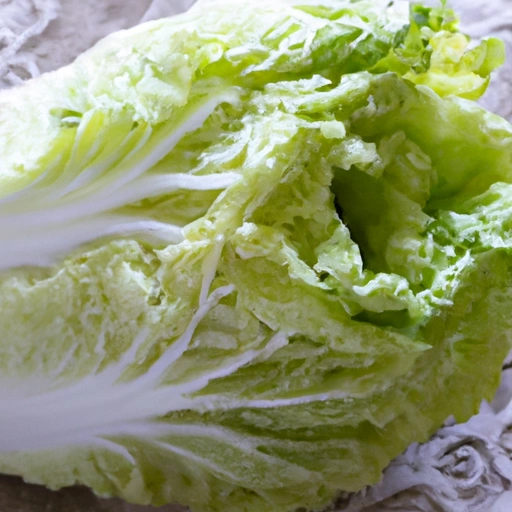Napa Cabbage
Description

Napa cabbage, also known as Chinese cabbage or 'Baicai' in Chinese, is a type of cabbage with origins in East Asia. It's characterized by its elongated head, crisp and light green leaves, and a white or pale green stalk. Napa cabbage is a versatile ingredient used in a myriad of dishes, ranging from fresh salads to fermented delights like kimchi. Its mild flavor and tender texture make it a popular choice in both Asian and Western cooking, offering a subtle yet distinct presence in any dish.
Common uses
Napa cabbage is commonly used in salads, stir-fries, soups, and as a wrapping for meat or seafood. Its leaves can also be pickled, most notably in the Korean staple, kimchi. In addition to its culinary uses, it is often used as a natural remedy in traditional medicine, owing to its presumed health benefits.
Nutritional value
Calories
A serving of Napa cabbage (1 cup, shredded, approximately 70 grams or 2.47 ounces) contains about 13 calories (54 kilojoules), making it a low-calorie addition to any meal.
Protein
This cabbage variety provides about 1 gram of protein per serving, contributing to muscle maintenance and growth.
Fat
With less than 0.2 grams of fat per serving, Napa cabbage is considered a fat-free food, suitable for low-fat diets.
Carbohydrates
Each serving contains roughly 2 grams of carbohydrates, which includes dietary fiber beneficial for digestive health.
Vitamins
It is rich in vitamins, particularly vitamin C and folate, with a serving providing about 27% of the Reference Daily Intake (RDI) for vitamin C and 20% for folate in the American system.
Minerals
Napa cabbage is also a good source of minerals like calcium and potassium. A serving offers around 77 milligrams of calcium (about 6% of RDI) and 180 milligrams of potassium (about 4% of RDI).
Health benefits
Napa cabbage is packed with antioxidants and has anti-inflammatory properties that may help reduce the risk of chronic diseases. The high fiber content aids digestion and can help maintain a healthy weight, while the abundance of vitamins and minerals support overall health and immune function.
Potential risks
While Napa cabbage is generally safe for consumption, individuals on blood-thinning medication should monitor their vitamin K intake, as it is relatively high in this cabbage. Additionally, those with thyroid issues should be cautious with cruciferous vegetables due to their goitrogenic compounds, which can interfere with thyroid hormone production.
Common recipes
Napa cabbage is often found in recipes such as kimchi, dumplings, hot pots, and various stir-fried dishes. It can also be used in coleslaw, tacos, and as a nutritious addition to smoothies.
Cooking methods
It can be eaten raw, steamed, boiled, sautéed, or grilled, making it a flexible ingredient in terms of preparation. Fermentation is another popular method, particularly for making kimchi.
Pairing with other ingredients
This cabbage pairs well with robust flavors like garlic, chili peppers, and soy sauce, as well as with other vegetables, meats, and grains for a balanced dish.
Summary
Napa cabbage is a leafy green vegetable with a multitude of culinary applications and health benefits. It is low in calories and fat while being rich in fiber, vitamins, and minerals. Napa cabbage's adaptability in the kitchen makes it a favorite among food enthusiasts and chefs globally, finding its way into various dishes that reflect a blend of culinary traditions.